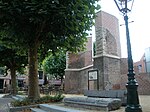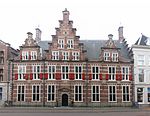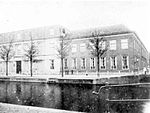Museum Boerhaave

Rijksmuseum Boerhaave is a museum of the history of science and medicine, based in Leiden, Netherlands. The museum hosts a collection of historical scientific instruments from all disciplines, but mainly from medicine, physics, and astronomy. The museum is located in a building that was originally a convent in central Leiden. It includes a reconstructed traditional anatomical theatre. It also has many galleries that include the apparatus with which Heike Kamerlingh Onnes first liquefied helium (in Leiden), the electromagnet equipment used by Wander Johannes de Haas (a Leiden physicist) for his low-temperature research, and an example of the Leiden jar, among many other objects in the extensive collection. The museum is named after Herman Boerhaave, a Dutch physician and botanist who was famous in Europe for his teaching at Leiden and lived to a great age, receiving brilliant students from all over Europe, including Peter the Great, Voltaire and Linnaeus.
Excerpt from the Wikipedia article Museum Boerhaave (License: CC BY-SA 3.0, Authors, Images).Museum Boerhaave
Waardgracht, Leiden
Geographical coordinates (GPS) Address Nearby Places Show on map
Geographical coordinates (GPS)
| Latitude | Longitude |
|---|---|
| N 52.161388888889 ° | E 4.4888888888889 ° |
Address
Vestingwerken van Leiden
Waardgracht
2312 MV Leiden
South Holland, Netherlands
Open on Google Maps










